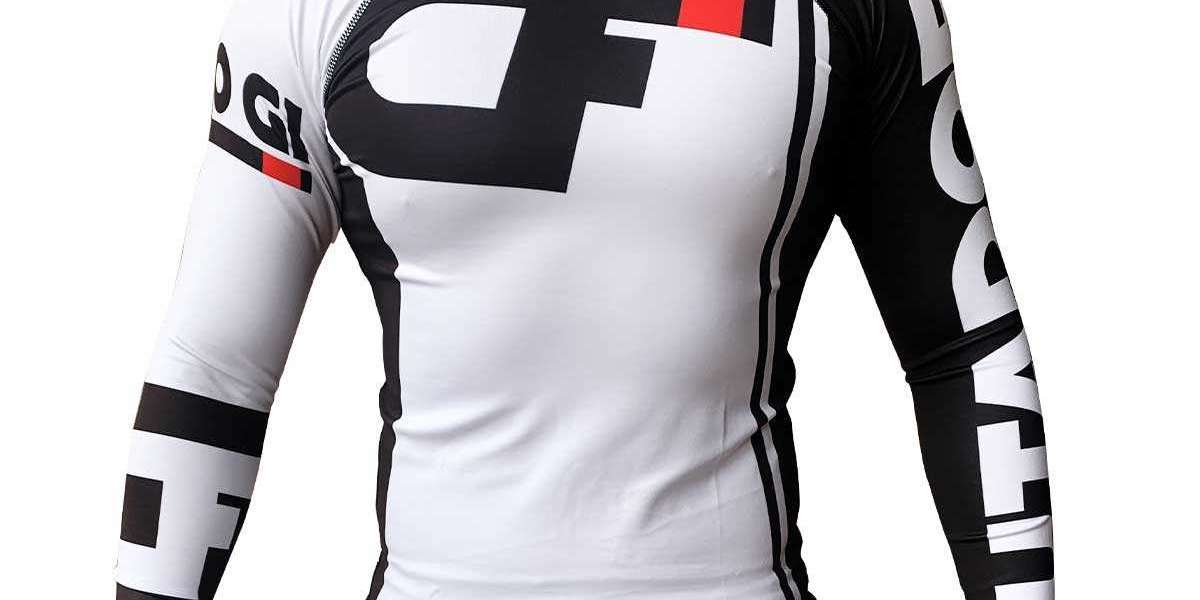In the dynamic world of no-gi Brazilian Jiu-Jitsu (BJJ), the rash guard serves as more than just apparel—it's a crucial piece of equipment that impacts both performance and comfort. Whether you're a seasoned practitioner or a newcomer to the sport, choosing the right rash guard can significantly enhance your experience on the mats. This comprehensive guide explores the essential features to look for when selecting a no-gi rash guard, focusing on both long sleeve and short sleeve options.
Understanding the Importance of No-Gi Rash Guards
No-gi BJJ differs from its gi counterpart in that practitioners wear compression-style rash guards instead of traditional kimono jackets. These garments are designed to provide several key benefits:
Moisture Management: Rash guards are typically made from moisture-wicking materials like polyester or nylon blends. This feature helps to keep the wearer dry by drawing sweat away from the skin, thereby reducing discomfort and chafing during intense training sessions.
Muscle Compression: The tight, compression fit of rash guards can improve blood circulation and muscle support, potentially reducing fatigue and aiding in muscle recovery.
Hygiene: Rash guards act as a barrier between the skin and the mats, minimizing direct contact and reducing the spread of bacteria and infections.
Protection: They offer some protection against minor abrasions and mat burns, which are common in grappling sports.
Essential Features in No-Gi Rash Guards
When shopping for a no-gi rash guard, consider these nine essential features to ensure you're investing in a high-quality garment that meets your specific needs and preferences.
1. Fabric Quality and Composition
The choice of fabric plays a crucial role in determining the comfort and performance of a rash guard. Look for materials that are durable, breathable, and moisture-wicking. Common fabrics include:
- Polyester Spandex Blends: These blends are lightweight, stretchy, and quick-drying, making them ideal for intense physical activity.
- Nylon: Nylon rash guards are known for their durability and resistance to abrasions.
- Compression Fabrics: Some rash guards feature specialized compression fabrics that offer additional support and muscle stabilization.
2. Flatlock Stitching
Flatlock stitching is essential for comfort during grappling sessions. Unlike traditional seams, flatlock stitching lies flat against the skin, reducing the risk of chafing and irritation. This feature ensures that the rash guard moves smoothly with your body, enhancing mobility and preventing distractions during training.
3. Fit and Compression
The fit of a rash guard can vary from snug to compression-style. A compression fit provides muscle support and aids in recovery by enhancing blood circulation. However, personal preference plays a role here; some practitioners may prefer a slightly looser fit for added comfort and mobility during training.
4. Durability and Abrasion Resistance
No-gi BJJ involves frequent contact with the ground and opponents, so durability is paramount. Look for rash guards with reinforced stitching and durable fabrics that can withstand rigorous training sessions without tearing or losing shape.
5. UV Protection
Many rash guards offer UV protection, which is beneficial for outdoor training sessions or competitions. UV-treated fabrics help to block harmful sun rays, reducing the risk of sunburn and skin damage.
6. Breathability
Breathability is crucial for maintaining comfort during intense physical exertion. Rash guards with mesh panels or strategically placed ventilation zones enhance airflow and regulate body temperature, keeping you cool and dry throughout your training session.
7. Design and Style
While functionality is key, aesthetics also play a role in choosing the right long sleeve rash guard. Look for designs that reflect your personal style preferences and match your team or academy colors. Many brands offer a variety of colors, patterns, and graphics to suit individual tastes.
8. Anti-Odor Technology
Some short sleeve rash guards feature anti-odor treatments or materials that resist the buildup of odor-causing bacteria. This feature helps to keep the rash guard smelling fresh even after multiple uses, enhancing hygiene and comfort.
9. Ease of Care
Consider the care instructions for the rash guard before making a purchase. Most rash guards are machine washable, but some may require specific care to maintain their shape and performance properties over time. Always follow the manufacturer's guidelines for washing and drying to prolong the life of your rash guard.
Choosing Between Long Sleeve and Short Sleeve Rash Guards
No-gi rash guards come in both long sleeve and short sleeve options, each offering distinct advantages:
Long Sleeve Rash Guards: Provide full coverage and protection against mat burns and abrasions. They also offer additional warmth during colder training sessions or outdoor activities.
Short Sleeve Rash Guards: Offer more freedom of movement and are preferred by some practitioners for their lightweight feel and increased ventilation.
Conclusion
Selecting the right no gi rash guards is a crucial decision for any BJJ practitioner. By prioritizing features such as fabric quality, stitching, fit, and additional functionalities like UV protection and breathability, you can ensure that your rash guard not only enhances your performance but also provides comfort and durability over the long term. Whether you prefer the coverage of a long sleeve rash guard or the mobility of a short sleeve option, investing in a high-quality garment will contribute to a more enjoyable and productive training experience on the mats.







